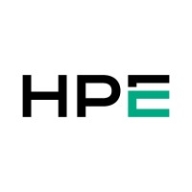

FlexPod XCS and HPE ConvergedSystem compete in the Converged Infrastructure category. FlexPod XCS seems to have an upper hand due to its tighter integration with Cisco and NetApp, which offers significant advantages.
Features: FlexPod XCS offers comprehensive integration, validated designs, and a unified support model, enhancing deployment and support. It is highly scalable and guarantees compatibility. HPE ConvergedSystem, valued for its simplicity, reduces the IT footprint with its turnkey approach and provides excellent hardware support.
Room for Improvement: FlexPod XCS could improve its unified management interface and vendor coordination, and accelerate adoption of new technologies. HPE ConvergedSystem should enhance the speed of supporting the latest versions and improve its integration with newer infrastructure components.
Ease Of Deployment and Customer Service: FlexPod XCS excels in deployment through validated design and enjoys a strong vendor collaboration for support. HPE ConvergedSystem benefits from simplicity in setup and hardware support but may lag in version support. Its customer service is proactive and responsive.
Pricing and ROI: FlexPod XCS is seen as expensive but offers high ROI through reduced operational costs and efficient resource management. Its pricing is justified by stable and unified architecture. HPE ConvergedSystem offers competitive pricing with ROI linked to lower data center costs and simplified management. Both systems stress the necessity of a thorough cost-benefit analysis based on organizational requirements.
| Product | Market Share (%) |
|---|---|
| HPE ConvergedSystem | 16.6% |
| FlexPod XCS | 10.3% |
| Other | 73.1% |


| Company Size | Count |
|---|---|
| Small Business | 34 |
| Midsize Enterprise | 66 |
| Large Enterprise | 182 |
| Company Size | Count |
|---|---|
| Small Business | 10 |
| Midsize Enterprise | 4 |
| Large Enterprise | 13 |
FlexPod XCS is the secure platform your applications need from edge to cloud. Easily manage your suite of cloud-native, edge, and enterprise apps. Integrate advanced cloud services without compromising performance, security, reliability, or scale.
HPE ConvergedSystem is designed for high availability, scalability, and seamless integration with HPE software and devices. It is valued for its stability, performance, and cost-efficiency, especially in areas such as power and cooling, making it suitable for diverse IT environments.
HPE ConvergedSystem offers a flexible and compact design, making it manageable even for IT novices. It serves multiple purposes, including server provisioning, container hosting, and recovery and backup operations. Users appreciate its capability to optimize virtual environments and its compatibility with VMware hosting and on-premises deployments. The system's seamless operation with HPE software and devices like Serviceguard, Synergy, and SimpliVity supports complex IT tasks. However, challenges include pricing and compatibility with new software versions, with room for improvements in scalability, full flash arrays, and monitoring tools. Enhancements in integration with third-party tools, remote copy functionality in low-bandwidth environments, and cloud management features are desired for better performance.
What are the key features of HPE ConvergedSystem?HPE ConvergedSystem is implemented in industries such as government, healthcare, and education. Consulting firms, resellers, and integrators use it to meet diverse client requirements, benefiting from its efficiency in virtual machine scaling and exceptional user experience delivery.
We monitor all Converged Infrastructure reviews to prevent fraudulent reviews and keep review quality high. We do not post reviews by company employees or direct competitors. We validate each review for authenticity via cross-reference with LinkedIn, and personal follow-up with the reviewer when necessary.